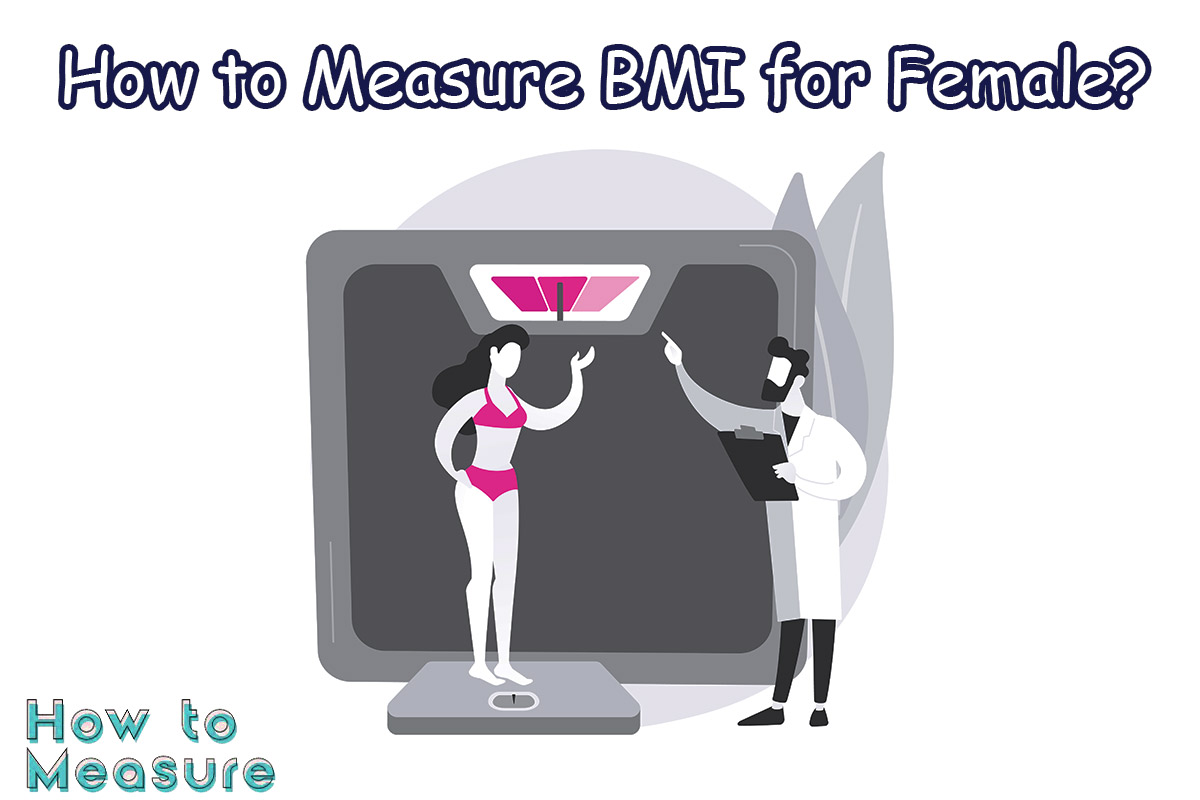Maintaining healthy body weight is essential to overall health and well-being. Knowing your body mass index (BMI) is a great way to measure your body fat and assess your risk for potential health problems. This article will provide an overview of how to measure BMI for females, including a BMI calculation formula, a BMI chart for females, guidelines for a healthy BMI, potential health risks of high BMI, tips for maintaining a healthy BMI, and professional advice on BMI measurement.
Definition of BMI
Body Mass Index (BMI) measures body fat based on height and Weight that applies to both adult men and women. It is calculated by dividing a person’s Weight in kilograms by their height in meters squared (kg/m2). A BMI of 18.5 to 24.9 is considered healthy for adults, a BMI of 25 to 29.9 is considered overweight, and a BMI of 30 or higher is considered obese. For females, a BMI of 18.5 to 24.9 is considered healthy, a BMI of 25 to 29.9 is considered overweight, and a BMI of 30 or higher is considered obese. Knowing how to measure BMI for a female is essential for maintaining good health.
BMI Calculation Formula
To measure BMI for females, you need to know your Weight and height. The BMI calculation formula is BMI = Weight (in kilograms) / Height (in meters)2. For example, if a female is 5 feet, 5 inches tall (1.65 meters) and weighs 130 pounds (59 kilograms), her BMI would be calculated as follows: BMI = 59 / (1.65)2 = 22.3.
BMI Chart for Females
A BMI chart for females helps determine a woman’s body mass index (BMI). BMI is a measure of body fat based on height and Weight. A woman’s BMI can be used to assess her overall health and determine her risk for certain diseases. The chart can help women understand their BMI and determine if they are at a healthy weight.
To use the BMI chart for females, a woman should first measure her height in inches and her Weight in pounds. She should then locate her height on the left side of the chart and her Weight on the top—the number in the box where the two meet is her BMI.
Read more: How to Measure Length of Halo Hair Extensions?

A BMI of 18.5 to 24.9 is considered a healthy weight. A BMI of 25 to 29.9 is considered overweight, and a BMI of 30 or higher is considered obese. Women with a BMI of 30 or higher are at an increased risk for certain health conditions, such as heart disease, stroke, and type 2 diabetes.
Women should consult their doctor if they have questions about their BMI or are concerned about their Weight. A doctor can provide personalized advice on maintaining a healthy weight and reducing the risk of certain diseases.
Guidelines for Healthy BMI
The World Health Organization (WHO) has established guidelines for determining a healthy BMI for females. Generally, a BMI between 18.5 and 24.9 is considered to be healthy. A BMI below 18.5 is considered underweight, while a BMI above 24.9 is considered overweight. It is important to note that BMI is not a diagnostic tool and should not be used to diagnose any medical condition. Instead, it should be used as a guide to help assess a person’s overall health.
Potential Health Risks of High BMI
A high Body Mass Index (BMI) can put a person at risk for various health issues. A BMI of 25 or higher is considered overweight, and a BMI of 30 or higher is considered obese. Women with a high BMI are at an increased risk for several health problems, including:
- Heart Disease: High BMI is associated with an increased risk of heart disease, stroke, and other cardiovascular diseases.
- Type 2 Diabetes: Women with a high BMI are more likely to develop type 2 diabetes.
- High Blood Pressure: High BMI is associated with an increased risk of high blood pressure.
- Certain Cancers: Women with a high BMI are at an increased risk for certain types of cancer, including breast, endometrial, and colon cancer.
- Osteoarthritis: Women with a high BMI are more likely to develop the degenerative joint disease.
- Sleep Apnea: High BMI is associated with an increased risk of sleep apnea, in which a person stops breathing during sleep.
- Gallbladder Disease: Women with a high BMI are more likely to develop gallbladder disease.
- Reproductive Issues: High BMI increases the risk of infertility and other reproductive issues.
Women must maintain a healthy BMI to reduce their risk of developing these and other health problems.
Tips for Maintaining a Healthy BMI for Female
- Eating a balanced diet
Eating a balanced diet is essential for maintaining a healthy BMI. Eating various foods from all the food groups will ensure that you get the nutrients your body needs. Eating plenty of fruits and vegetables, lean proteins, whole grains, and healthy fats can help you maintain a healthy weight.
2. Being physically active
Regular physical activity is essential for maintaining a healthy BMI. Aim for at least 30 minutes of moderate physical activity each day. This includes walking, jogging, swimming, biking, or any other activity that increases your heart rate.
3. Limiting screen time
Spending too much time in front of screens can lead to an increase in BMI. Limiting screen time to two hours or less per day can help reduce the risk of becoming overweight or obese.

4. Avoiding sugary drinks
Sugary drinks, such as soda and energy drinks, are high in calories and can lead to weight gain. Avoiding sugary drinks and choosing water or low-calorie beverages can help maintain a healthy BMI.
5. Getting enough sleep
Getting enough sleep is essential for maintaining a healthy BMI. Aim for 7-9 hours of sleep each night to ensure your body has enough time to rest and recover.
6. Managing stress
Stress can lead to an increase in BMI. Finding healthy ways to manage stress, such as yoga, meditation, or journaling, can help reduce the risk of becoming overweight or obese.
Read more: How to measure Bali bras size?
Professional Advice on Female BMI Measurement
It is essential to seek professional advice when measuring BMI for females. Doctors and nutritionists can provide valuable insight into how to accurately measure BMI and determine if a female is at a healthy weight. They can also provide personalized advice on diet and exercise plans to help females reach and maintain a healthy BMI. Additionally, medical professionals can help identify any underlying health conditions that may be causing an individual to have an abnormally high BMI. It is important to note that BMI is not a perfect measure of health and should not be used as the sole indicator of an individual’s health.
Conclusion
In conclusion, measuring BMI for females requires the same process as measuring it for males. The calculations involve dividing a female’s Weight in kilograms by her height in meters squared. However, it is important to note that when determining healthy BMI ranges for females, it is essential to consider factors like body composition and muscle mass, especially for athletes or those with high muscle mass. BMI may not accurately reflect their body fat percentage since muscle weighs more than fat. Therefore, additional measurement methods, such as skinfold callipers or bioelectrical impedance analysis, may need to be used with BMI to assess a female’s health status accurately. BMI measurement can be a valuable tool for assessing female health and should be used alongside other clinical measures and professional advice. For read more articles visit How to Measure website.











